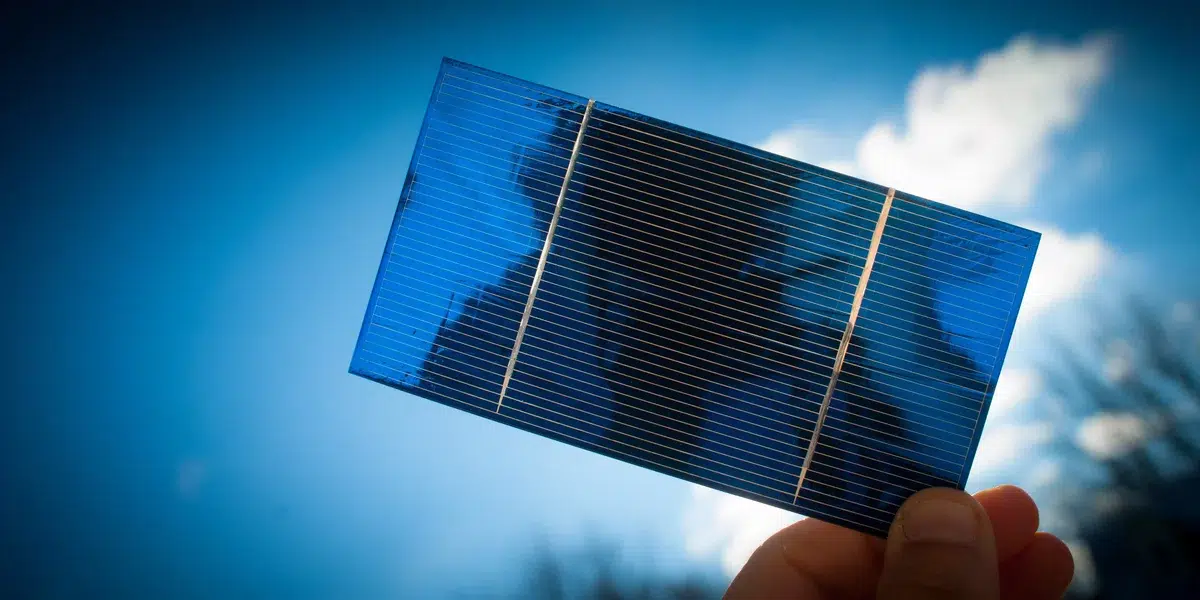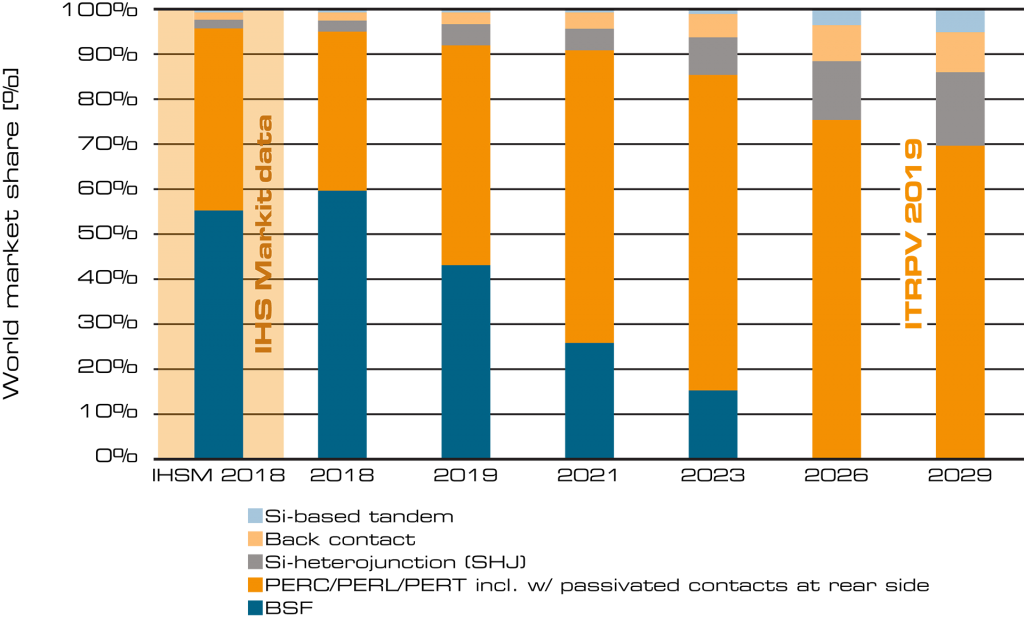The photovoltaic industry is constantly exploring new technologies to maximize equipment performance and reduce final energy costs. Heterojunction technology is a new technology that is getting a lot of attention as the best option to increase efficiency and power output to the highest level, and more and more manufacturers are starting to deploy this technology in their products. Now, we will tell you more about this innovative technology.

What Is Heterojunction Technology
Heterojunction solar technology is a method of capturing solar energy using heterojunctions formed from different materials. HJT combines the best qualities of crystalline silicon with the best qualities of amorphous silicon films to produce high-power hybrid cells that exceed the performance of PERC, the industry’s preferred technology.
Heterojunction solar technology generally has a higher conversion efficiency and a wider spectral response range than traditional monocrystalline or polycrystalline silicon solar cells, making it an important way to improve solar energy utilization.
What Are Heterojunction Solar Cells
Heterojunction solar cell combines two different technologies into a single cell: crystalline silicon and amorphous “thin film” silicon.
Silicon heterojunction solar cells consist of three layers of photovoltaic material. The top layer is made of thin film amorphous silicon that captures sunlight before it hits the crystal layer, as well as sunlight reflected from the layers below. It’s so thin that sunlight can pass directly through, and the sunlight that passes through is absorbed by the underlying amorphous film layer. The middle layer is made of monocrystalline silicon and its main role is to convert most sunlight into electricity.
Using these technologies in combination can collect more energy than using them alone, and through three different photovoltaic layers, the efficiency of silicon heterojunction solar cells can reach 25% or more.
The amorphous silicon layer in silicon heterojunction solar panels is important for improving performance, acting as a passivation layer that helps reduce defects and electronic recombination, a common challenge for conventional solar panels. In addition, the crystalline silicon layer effectively carries charge, making it easier for electrons to move within the cell structure.

How Do Heterojunction Solar Panels Work
The working principle of heterojunction solar panels is similar to other photovoltaic modules, which work under the photovoltaic effect, the main difference is that heterojunction solar technology uses three layers of materials, combining thin films and traditional photovoltaic technology. The working process involves connecting the load to the terminals of the module, and the photons are converted into electrical energy and generate a current that flows through the load.
When sunlight hits the surface of a solar cell, photons are absorbed and excite electrons in the cell. The excited electrons are pushed to form a stream of electrons, which move through the heterojunction. In a heterojunction, the excited electrons recombine with the holes (that is, the missing spots of the atom, left behind by the excited electrons), releasing energy. This recombination of electrons and holes causes a flow of electrons, creating an electric current. This current passes through the battery’s external circuit, producing electricity that can be used by external devices.
Heterojunction solar cells utilize the properties of different semiconductor materials, such as silicon (Si), cadmium selenide (CdTe), copper indium gallium selenide (CIGS), etc., to form heterojunction, thus extending the spectral range and improving the conversion efficiency of solar cells.
Why Choose Solar Panels With HJT Technology
Higher Conversion Efficiency
Compared with conventional crystalline silicon solar cells, heterojunction (HJT) solar cells utilize the combination of different semiconductor materials to achieve higher photoelectric conversion efficiency.
At present, the conversion efficiency of heterojunction single-sided modules is 26.07%, and the conversion efficiency of double-sided modules is more than 30%, which is one of the most efficient solar technologies in the industry.
High Double-sided Ratio
Heterojunction solar cell modules have a double-sided ratio of more than 93%, which means that they can generate electricity from both sides of the module, making heterojunction cells excellent in design performance.
Elasticity and Adaptability
Heterojunction solar cells are manufactured using thin film technology, which has a more flexible production process than traditional silicon-based solar cells. Heterojunction solar cells utilize a combination of different materials, so the right combination of materials can be selected for specific application needs.
Heterojunction solar cells have high flexibility and lightweight design to achieve curling, bending or custom shapes to adapt to different application scenarios and design needs, such as architectural integration, outdoor activity equipment, mobile power supplies, etc.
Long Service Life
Heterojunction solar cells are known for their durability, with an amorphous silicon layer that acts as a protective barrier, reducing cell degradation and preventing PID effects. On average, thin-film photovoltaic modules have a life expectancy of up to 25 years, while heterojunction solar cells can last for more than 30 years under normal conditions.
Good Temperature Coefficient
Heterojunction solar cell technology is less affected by temperature changes than conventional crystalline silicon cells. Solar panels are generally less effective at high temperatures, which have less effect on the film than traditional monocrystalline silicon or polysilicon, due to having two layers of thin-film silicon, which allows heterojunction solar panels to function well even at hot temperatures.
In addition, heterojunction solar cells also have a low temperature coefficient, and their power generation efficiency can reach more than 23% at temperatures below 200°C. They also have a low temperature coefficient of -0.2%/K, helping to improve the cost effectiveness and power output of photovoltaic systems.
Simple Manufacturing Process
The production of solar photovoltaic modules using HJT solar panels requires only 5-8 steps, while PERC technology requires about 13 steps.
Compared with traditional solar cells, the process stage is reduced and the production process is simplified. As the cost of the necessary equipment continues to fall, it also makes it more economically viable.
Cost Effective
Amorphous silicon used in heterojunction solar cells is a cost-effective photovoltaic technology. Because fewer materials and simpler production processes can be used, heterojunction solar cells produced using thin-film technology are generally less costly.
The Future of HJT Solar
Heterojunction technology is a promising and efficient technology that will continue to be adopted by more and more companies based on the many benefits of heterojunction solutions. While PERC has been a popular choice in the industry for many years, its complex manufacturing process cannot compete with HJT.
The solar industry produced 5GW of heterojunction solar panels in 2019, making heterojunction technology about 5% of the retail market, with the largest manufacturers being Tesla in the United States and Panasonic in Malaya and Japan, but expected to grow in the future. According to the ITRPV 2019 report, heterojunction batteries are expected to gain 12% market share by 2026 and 15% market share by 2029.

Conclusion
Investing in solar panels is a long-term commitment, so working with a trusted energy management company is crucial. GYCX Solar uses an innovative scientific approach to deliver energy management solutions that exceed expectations. We are committed to helping you reduce your external energy procurement needs through leading technologies and strategies, thereby saving time, cost and effort and maximizing the return on your building investment. Contact us today to find out how building photovoltaics, transparent photovoltaic Windows and thin films can be incorporated into your next project and experience the exceptional service GYCX Solar brings.
GYCX Solar has offices and warehouses in several countries and has established long-term partnerships with outstanding installers. We are committed to providing our customers with the latest solar panel quotes and solutions, and we are happy to help you whenever you have any photovoltaic related questions. Join us on our Facebook page to discuss the latest solar technologies and solutions!
